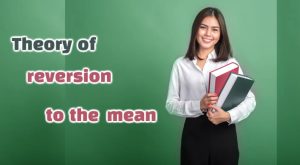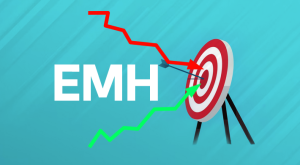Navigating the Currency Maze:
Economic Theories for Forex Traders
The foreign exchange market, with its vastness and fluidity, can seem like a complex and unpredictable beast. However, understanding the underlying economic theories can equip you with valuable tools to navigate this dynamic landscape. These theories, while not perfect predictors, offer valuable insights into the forces influencing currency valuations.
Forex trading directly affects several economic theories, as it influences factors that these theories are built upon. Here are some prominent examples:

Common theories and methods:
Purchasing Power Parity (PPP):
This theory suggests that the exchange rate between two currencies should adjust to make a basket of goods and services cost roughly the same amount in both countries. Forex trading activity can impact the relative prices of goods and services in different countries, potentially affecting the validity of PPP in the short term.
Interest Rate Parity (IRP):
This theory suggests that the difference in interest rates between two countries should be reflected in the expected change in their exchange rates. Forex traders actively consider interest rates when making trading decisions, and their actions can influence the relationship between interest rates and exchange rates.
Balance of Payments (BOP):
This theory focuses on the recording of all economic transactions between a country and the rest of the world. Forex trading activity directly contributes to a country’s BOP by influencing its current and capital accounts. For instance, a surge in foreign investment can lead to a capital account surplus.
International Fisher Effect (IFE):
This theory suggests that a positive relationship exists between nominal interest rates and inflation rates across different countries. Forex trading activity can influence both interest rates and inflation through its impact on capital flows and exchange rates.
Market Efficiency Hypothesis (EMH):
This theory suggests that all available information is already reflected in current market prices, making it impossible to consistently outperform the market through fundamental or technical analysis. However, many forex traders believe that inefficiencies can still exist in the market, allowing for profitable trading opportunities.
Monetary Model:
This theory suggests that exchange rates are primarily determined by the relative money supplies of two countries. An increase in a country’s money supply is expected to lead to the depreciation of its currency.
Behavioral Finance Theories:
These theories incorporate psychological factors like investor overconfidence, herding behavior, and loss aversion into explaining forex market movements. They suggest that market sentiment and irrational decision-making can influence exchange rates.
Monetary Policy:
Central banks use monetary policy tools like interest rate adjustments to influence their economies. Forex market activity can influence the effectiveness of these tools by impacting exchange rates and inflation.
Carry Trade:
This is a trading strategy that involves borrowing money in a low-interest-rate currency and investing it in a high-interest-rate currency. The goal is to profit from the difference in interest rates, even if the exchange rate moves slightly against the trader. However, carry trades can be risky if the exchange rate moves significantly against the borrowed currency.
Portfolio Balance Model:
This theory proposes that investors choose to allocate their assets across different currencies based on their risk and return preferences. Changes in investor preferences and risk perceptions can influence exchange rates.
Asset Market Model:
This theory views exchange rates as being driven by the demand and supply of assets denominated in different currencies. Changes in investor sentiment and risk appetite can impact the demand for specific currencies, influencing their exchange rates.
Technical Analysis: Chartism:
This is a historical approach to analyzing the forex market, focusing on identifying recurring patterns and formations in price charts. While not as widely used as technical analysis, some traders still incorporate elements of chartism into their trading strategies.
Session trading model:
Session trading in forex focuses on specific market hours, often aligning with major financial centers like London, Tokyo, and New York. Traders aim to capitalize on price movements during these periods of increased activity and potentially tighter spreads. By understanding these sessions and their characteristics, traders can identify potential entry and exit points for short-term positions.
Fundamental Analysis:
This theory focuses on analyzing economic, political, and social factors that might impact currency valuations. Fundamental analysts consider factors like interest rates, inflation, economic growth, political stability, and geopolitical events to make informed trading decisions.
Remember:
It’s crucial to remember that these theories are not foolproof and should be used in conjunction with other analysis methods for informed trading decisions. Historical examples illustrate the potential influence of these theories but also highlight the complex interplay of various factors in shaping exchange rates. By gaining a deeper understanding of these economic concepts, forex traders can navigate the market with greater confidence and make well-rounded trading decisions.
successful forex trading requires a blend of knowledge, experience, and sound risk management practices.
In the future:
In the following articles, we will examine the above theories in detail along with historical examples. Stay with us….
Disclaimer: This article is for informational purposes only and should not be considered financial advice. Please consult with a qualified financial professional before making any investment decisions.
Happy trading
may the pips be ever in your favor!






